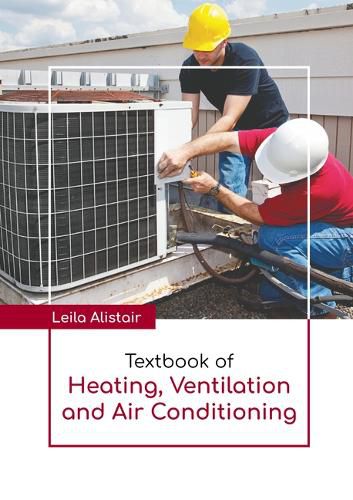Readings Newsletter
Become a Readings Member to make your shopping experience even easier.
Sign in or sign up for free!
You’re not far away from qualifying for FREE standard shipping within Australia
You’ve qualified for FREE standard shipping within Australia
The cart is loading…






The technology of heating, ventilation, and air conditioning focuses on ensuring indoor and vehicular environmental comfort. Its aim is to deliver both comfort and superior indoor air quality. The technology advances based on the principles of heat transfer, thermodynamics and fluid mechanics. Ventilation entails the exchange of air in a given space to regulate temperature and eliminate various elements such as dust, airborne bacteria, carbon dioxide, odors, and more. This can be accomplished through mechanical means, employing devices like an air handler, mechanical exhaust systems, or ceiling fans. Alternatively, natural methods involve the use of operable windows, louvers, or trickle vents. In central heating systems, water, steam, or air is heated through a boiler, furnace, or heat pump. The ensuing heat is then transferred to the living spaces within a house or building through the processes of convection, radiation, or conduction. Air conditioning and refrigeration encompass the cooling and regulation of humidity by extracting heat through heat transfer mechanisms. This book compiles chapters delving into the essential principles of heating, ventilation, and air conditioning technology. It carefully selects concepts that reshape our comprehension of crucial aspects like design, analysis, and control systems within this field. Intended as a valuable reference for architects, interior designers, professionals, and students engaged in this domain, it offers comprehensive insights.
$9.00 standard shipping within Australia
FREE standard shipping within Australia for orders over $100.00
Express & International shipping calculated at checkout
The technology of heating, ventilation, and air conditioning focuses on ensuring indoor and vehicular environmental comfort. Its aim is to deliver both comfort and superior indoor air quality. The technology advances based on the principles of heat transfer, thermodynamics and fluid mechanics. Ventilation entails the exchange of air in a given space to regulate temperature and eliminate various elements such as dust, airborne bacteria, carbon dioxide, odors, and more. This can be accomplished through mechanical means, employing devices like an air handler, mechanical exhaust systems, or ceiling fans. Alternatively, natural methods involve the use of operable windows, louvers, or trickle vents. In central heating systems, water, steam, or air is heated through a boiler, furnace, or heat pump. The ensuing heat is then transferred to the living spaces within a house or building through the processes of convection, radiation, or conduction. Air conditioning and refrigeration encompass the cooling and regulation of humidity by extracting heat through heat transfer mechanisms. This book compiles chapters delving into the essential principles of heating, ventilation, and air conditioning technology. It carefully selects concepts that reshape our comprehension of crucial aspects like design, analysis, and control systems within this field. Intended as a valuable reference for architects, interior designers, professionals, and students engaged in this domain, it offers comprehensive insights.